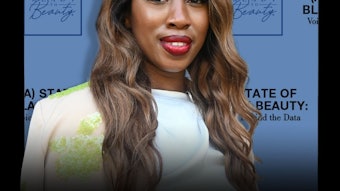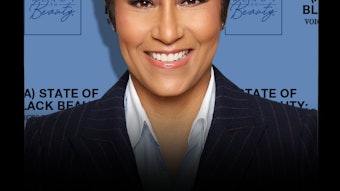
“Decoration” has been a longstanding industry term for the visual aspect of packaging. Unfortunately, this arcane term represents everything wrong with the old way of thinking—that design is merely a façade to “gussy things up.”
If a brand views design merely as the exterior of its packaging, they’re missing out. Design goes deeper, and is integral in helping brands achieve business objectives. Design can inform product organization, retail appearance, and even the product itself.
Telling an Ingredient Story
Design thinking was recently put to use when our research team discovered that the point of difference for a new brand was its key ingredient story. This ingredient, a superfood, was poised to be the next hot thing in its category, and a main differentiator from competitors. The research clearly indicated the advantages of a single ingredient story to retailers, consumers, and public relations.
A brand’s breadth of offerings should be well thought-out—in other words, designed.
However, the client didn’t realize the value of this ingredient, and had even planned a line extension without this component. Once seen in this light, the brand agreed to feature this material as the backbone of its story. Upcoming launches would be formulated to ensure that all products would contain this superfood.
Meanwhile, our creative team reworked the product name and logo to reference the key ingredient story. The result is a stronger, consistent brand story that resonates with consumers at every touch point, creating an overall designed experience.
Brand Architecture Matters
Many times, fledgling brands have a great idea for one, two or even three main products comprising their entire line. However, experience shows us that retail buyers want more breadth and options from the brands they carry.
Brand architecture and planning,* which employs design thinking, can help you anticipate how products will be added and presented in the future. A brand’s breadth of offerings should be well thought-out—in other words, designed.
As a design firm we are often asked to help brands consider how to best position and present their products from the retail standpoint of overall category, department and merchandising. During a recent branding audit for a prominent skin care brand, we helped uncover the reason why, at retail, their body wash had not been performing as well as their other skin care offerings.
The overall design of a line’s brand architecture has everything to do with the way you intend the user to shop the line.
While this SKU was well-represented online, it was only upon our store visits that the problem became clear. This single SKU was separated from the other products in their line. As a result, it was trying to compete against robust offerings from other brands. The consumer perception was that the brand was a dabbler, rather than a leader in that category. The lesson was that more body wash SKUs were needed to increase the presence at retail.
When it comes to the number of products a brand should offer, there is no pat answer. As a guide, too few SKUs means there are not enough choices, whereas too many SKUs can overwhelm. Sometimes it’s only a matter of reformulating the scent. Other times it’s a matter of bringing in a new ingredient, or differentiating the offering based on concentration levels.
Whatever the case, you must think like a designer and take a hard look at where new products fall into the larger picture of your offerings. This may even mean creating sets and POP displays that position a new product into a new category.
It’s About the Consumer, Not You
Great design from a consumer’s perspective should translate to a lucid, seamless experience. Ultimately, it should bring joy. To do so, brands must remain flexible and anticipate their audience’s needs.
When a brand finds success with one hero product, there must always be a complimentary product, or “next step” product, to anticipate a consumer’s reaction of, “I love it! What is next?”
Too often there is a disconnect between the brand’s promise and the reality of the user experience.
Occasionally, you might need to shift formulations or product assortment to make regimens clearer. This subtle shift in mindset is part of a mantra we help instill in all our clients: “It’s never about you, it’s always about them.”
The overall design of a line’s brand architecture has everything to do with the way you intend the user to shop the line. A few of the more common ways are: by key ingredient, by step in the regimen, by skin or hair type, by efficacy level (basic vs. pro) or by user benefit. Wise brands choose one main approach and stick with it throughout their entire line, as opposed to reinventing a new system each time, which only leads to consumer confusion.
Packaging and Product Experience
For beauty brands, packaging must convey the entire product experience from the outside in. If your formulation is designed to be the most efficacious on the market, your packaging must use all the tools available to convey this: color, images, materials, words, etc.
Even the selection of the packaging components can add to the user’s experience of how well-designed the product is overall. If you are trying to convey a sense of convenience, the packaging components should be easy to use.
Too often there is a disconnect between the brand’s promise and the reality of the user experience. It is almost as if the people making the product have never spoken to the people designing the package. Formulation, brand architecture (i.e., the line’s overall organization), and packaging must work together to deliver on the brand promise.
Design reinforces the brand story in ways that words cannot.
Sometimes, formulations need to change in order to help a brand have a unified look across the whole line. Outlier products and formulations can be challenging, as brands seek to build a cohesive look.
For example, a cream may need to be made to a thinner consistency in order to flow properly out of the same pump you’ve already sourced for another product. That way, consumers can have a more unified experience with all your offerings. In addition, you are able to keep costs down and avoid the sourcing nightmare of unique cases for each product.
Most companies are likely too caught up in the scramble to innovate, rushing the design process and not realizing their full potential.
More commonly, design reinforces the brand story in ways that words cannot. For example, color-coded caps can be useful for educating consumers about regimens, ingredients, strength, etc. A gold-lined cap can often convey a pro-level in a more effective way than words. Perhaps a brand is all about giving the consumer choices and control, and a “dial your own strength” cap or pump could further convey this, reinforcing the marketing concept.
For natural brands, the selection of recycled and recyclable components is essential in achieving a consistent brand promise. Discordant components, especially from a materials standpoint, can leave a bad taste with consumers if they are not in line with the rest of the brand’s ethos.
Instilling Holistic Design Thinking
With all the advantages we’ve seen, it would seem that taking a holistic view of design would be a brand’s top priority. Then why are there so few cohesive brands?
Most companies are likely too caught up in the scramble to innovate, rushing the design process and not realizing their full potential. Fear of losing control to the creative team may also be a factor. They are often seen as prone to wasting time and money on costly dreams.
Too often, companies are developing brands with a manufacturing-centered mindset. They’re in the business of making things, and introduce new products with rapid succession without much consideration for the consumer’s needs.
Marketing departments must then create stories around the products, and the “decoration” is applied. The result is a number of similar products with no clear differentiation from the consumer’s perspective.
One hundred percent of your customers will see your packaging.
Many design teams now have clear strategic processes to help focus creative exploration in a holistic manner. The creative team must be given access to all key decision makers and influencers. This allows them to ask crucial questions and innovate with experts from all arenas—R&D, product development, manufacturing, sales, etc.
The result will be a brand that beckons shoppers from afar with packaging that communicates clearly. Consumers will become interested in other offerings from their product line. At home, they will find that the experience of the item delivered the promise of the packaging. The consumer will then become a fan, and actively seek out the brand, which would be easily recognizable by its packaging.
Keep This in Mind
If you and your team are still questioning the greater value of design and design thinking, consider this: One hundred percent of your customers will see your packaging. They may never see your advertising or visit your website. But they will see your packaging, which should be the distillation of your entire brand story and experience.
Every investment you’ve made in your brand to date is riding on the magical moment your customer encounters your packaging for the first time. How can you afford not to invest in great thinking and design?
Sheri L. Koetting is the co-founder and chief strategist of MSLK, a branding agency based in New York. MSLK specializes in helping beauty brands find their voice in today’s crowded marketplace through 360° brand positioning—from overall brand strategy to brand identity, packaging, retail experience, websites and social media campaigns. Contact: sheri AT mslk.com.
*Read “4 Ways to Organize Your Brand around the User Experience."










